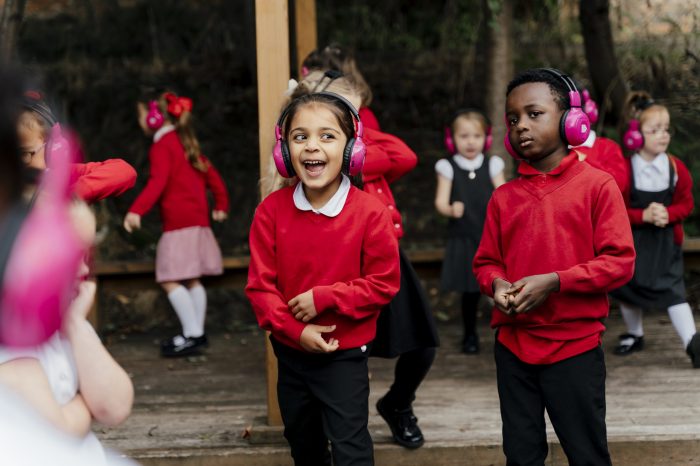
Parklands School in Leeds are big believers in a kinesthetic, active approach to learning. They use now>press>play’s resources to support this, making learning fun and accessible for pupils of all ages and needs.
In this case study, Headteacher Chris Dyson describes the impact of using now>press>play in the school.
“I can't imagine Parklands without now>press>play.”
Chris Dyson, Headteacher, Parklands Primary School
How now>press>play enhances our learning
now>press>play engages the children with learning to put them in a real time capsule, like a TARDIS to go back to the situation which they’re actually studying. When you’re doing the Stone Age Experience, the children are actually in the stone age setting, doing the cave painting, hunting and cooking, so it’s really immersive learning.
When you’re studying something from hundreds of years ago, it’s hard for the children to imagine how it was. But putting on the headphones takes them back into that time capsule and makes it real, fun and memorable. It gives children practical experience across the curriculum and the facts the children come out with afterwards are brilliant and this supports the “deep dives”.
now>press>play is not just a one off thing, what makes it so great is that after their now>press>play Experience the children go back to the classroom and continue the work with the follow on worksheets and staff can easily link to their own lesson plans too. It’s an all round learning experience. It’s not just sticking on some headphones for 20 minutes and then going back and doing something else. It’s the continuation, it’s the implementation of the Experiences they’ve just had that impacts the quality of the work.

Supporting all our learners with now>press>play
We use now>press>play from Reception all the way up to Year 6, but more importantly we’ve got a “Resourced Provision” on our site which supports children with severe special needs. We use now>press>play with them and I was amazed at how open it was to all abilities and ages. It’s an all-inclusive programme.
When you look at the different kinds of learning styles, kinesthetic learning, visual learning, now>press>play ticks so many boxes. The children are not just sat down at a desk with a paper and a pencil, they’re actually learning kinesthetically, they’re learning with movement, they develop speaking and listening, because they have to listen to the direction. The children absolutely love it.
We regularly have visitors to our school to see how we teach and look at the resources we use, and we will often use now>press>play to model a demonstration.
How now>press>play supports our teachers’ workload
The teacher workload is reduced because you’ve got a ready made lesson, plus the follow up lessons. The children are completely engaged, so they want to write about it. They want to show off their knowledge based learning that they’ve just been opened up to.
If there’s ever a technical issue, you get a response back within the hour. If someone’s got to come out, they’re there the following day, they’re not there three, four, five months later. That’s essential.

A future-proof investment for our school
now>press>play is being updated all the time which means it never gets stale, but as I said it can’t be used as a doorstop because otherwise, as with anything, you’re not going to get your money’s worth. Every year now>press>play add content and incorporate new topics and subjects that keep it current, such as Mental Health and Online Safety. They innovate all the time to keep it fresh.
The free trial that now>press>play offers means it’s open for absolutely everyone. At the end of my trial, I thought to myself, it’s a brilliant way to support learning, it’s staying here! now>press>play helped us to match their Experiences and it’s now fully integrated across our curriculum. We use it every week and the staff and children love it.
Many thanks to Chris Dyson for sharing this case study with us. We’re excited to continue working to support Parklands’ kinesthetic learning approach in the future.
